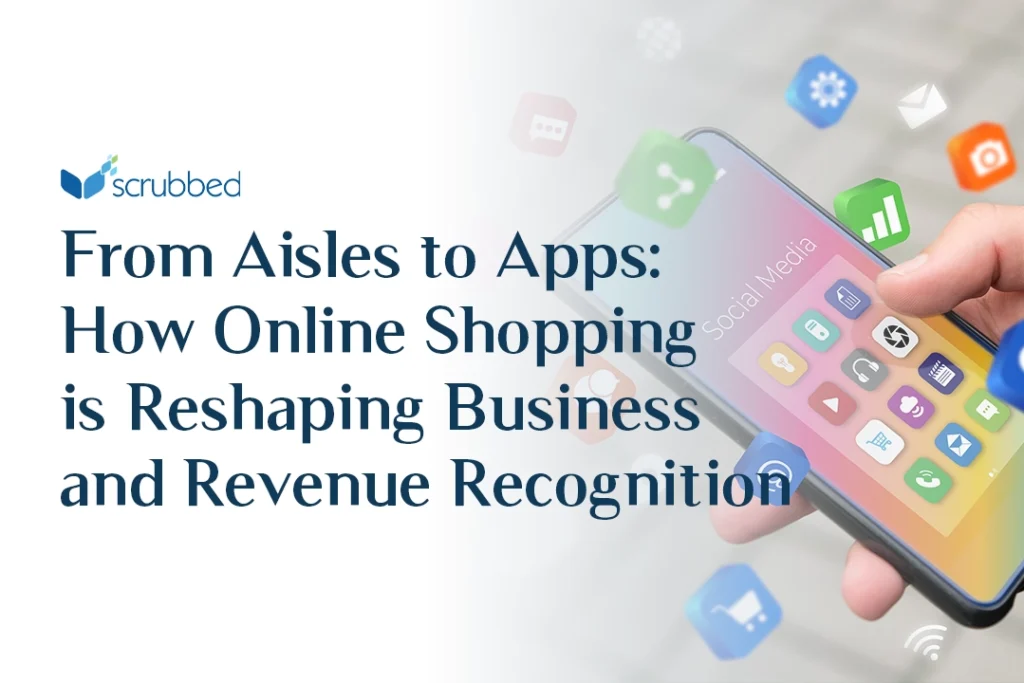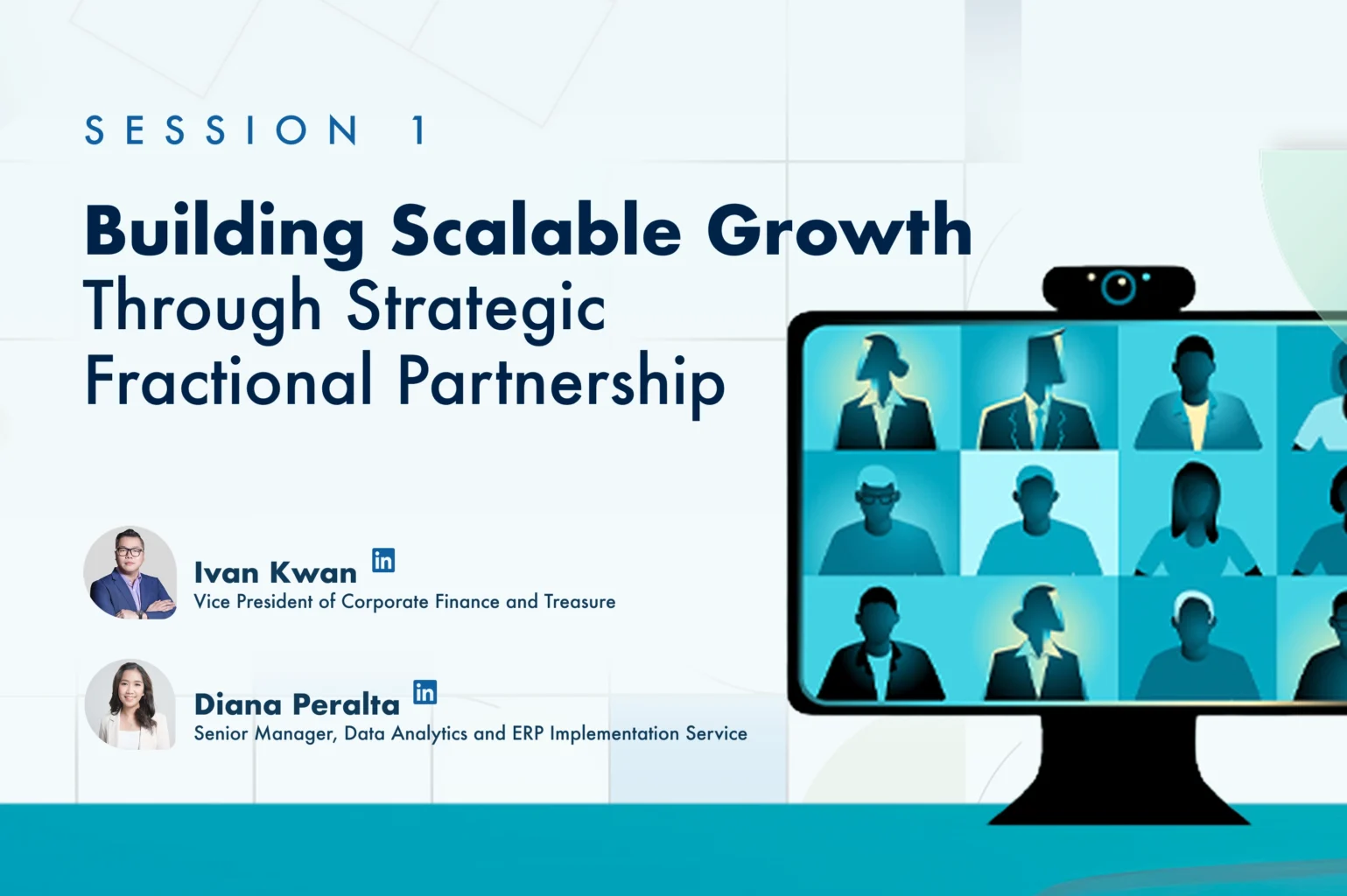Who doesn’t enjoy a bit of retail therapy? Most shoppers make purchases to lift their mood, while some buy items to celebrate special occasions. Whether it’s the stress of a busy week, personal challenges, or a milestone worth acknowledging, shopping can provide a much-needed escape and a moment of joy.
Traditionally, this happened in physical stores—where customers could see, touch, and try products before buying. But today, e-commerce has taken the lead: a few taps now replace aisles and displays, with digital payments, personalized recommendations, and global reach making shopping easier and more accessible than ever.
With this digital shift transforming the retail landscape, one big question arises: How is the digital shift impacting revenue recognition for the e-commerce industry?
How to Recognize Revenue
To fully understand the impact of e-commerce, it’s crucial to first grasp how revenue is recognized under ASC 606, Revenue from Contracts with Customers. This standard defines a five-step process to ensure accurate and consistent revenue recognition in financial statements. These steps are:
- Identify the contract with the customer.
- Identify performance obligations.
- Determine transaction price.
- Allocate transaction price to performance obligations.
- Recognize revenue.
Understanding these steps is crucial for businesses, especially as e-commerce continues to redefine how transactions occur in the digital age.
Why Revenue Recognition Can Be Challenging
Revenue recognition can become complex, particularly when selling physical goods, and even more so in the online space. Picture this: a customer places an online order, pays through PayPal, returns one of the items a week later, and applies a discount voucher at checkout. From the shopper’s point of view, this is just a normal transaction. But for businesses, each step adds complexity when applying ASC 606’s rule that revenue must be recognized once performance obligations are satisfied.
In e-commerce, several factors give rise to recurring challenges in applying revenue recognition, such as:
Principal vs Agent Considerations
A critical challenge for online marketplaces is determining whether they are acting as a principal (directly providing the goods or services) or as an agent (facilitating the transaction between buyers and third-party sellers).
The principal versus agent determination follows a two-step process:
- Identify the specified good or service to be provided to the end consumer.
- Assess whether the reporting entity controls the specified good or service before it is transferred to the consumer.
A reporting entity is considered the principal in a transaction if it gains control of the specified good or service before it is transferred to the consumer. Conversely, the entity is considered an agent if it does not gain control before the transfer.
However, determining whether the reporting entity has obtained control is not always straightforward. ASC 606 provides the following indicators to help management make this assessment:
- The entity is primarily responsible for delivering and ensuring the acceptability of the good or service.
- The entity bears inventory risk either before transfer to the customer or after, such as when returns are possible.
- The entity has the ability to set the price, suggesting control over the good or service.
Understanding the distinction between principal and agent is crucial, as it directly affects the amount of revenue recognized. For instance, when acting as a principal, an entity must recognize revenue based on the gross amount of sales. Conversely, when acting as an agent, revenue is limited to the net commission or fee earned.
A common area where the principal-versus-agent distinction becomes important is in the treatment of payment processing fees. Many e-commerce businesses rely on third-party intermediaries such as PayPal, Stripe, or credit card companies to process customer transactions. These intermediaries often deduct a service fee before remitting the net balance to the seller.
From a cash perspective, this might appear straightforward—the seller simply receives the net proceeds. However, the accounting treatment requires closer evaluation under ASC 606.
If the reporting entity is the principal, it must recognize revenue at the gross sales amount by the agent from the customer– this is before deducting the agent’s commission and any related payment processing fees. In most cases, processing fees are recorded separately as an operating expense, not as a direct reduction of revenue.
Managing Returns and Warranties
Returns and warranties make revenue recognition especially tricky in e-commerce. A company may record a sale at the point of purchase, only for the customer to return the product days or weeks later. This timing gap means revenue cannot always be recognized outright — businesses must estimate potential returns and adjust revenue upfront, relying on historical data, current trends, and return patterns.
The right of return typically entitles customers to a refund, store credit, or product exchange. To account for this properly, companies must recognize revenue based on the expected consideration, excluding items likely to be returned, and record both a refund liability and a return asset for products expected to come back.
Warranties add another layer of complexity. Companies often include them with sales, but the accounting depends on whether the warranty is assurance-type or service-type. An assurance-type warranty provides the customer with the assurance that the product will function in accordance with agreed specifications, and it is accounted for under ASC 460, Guarantees. A service-type warranty offers the customer a service in addition to the assurance that the product will function as specified, and it is accounted for as a separate performance obligation under ASC 606. Knowing the difference is critical, as it affects when and how revenue is recognized.
Shipping and Handling Activities
Shipping and handling services play a crucial role in e-commerce revenue recognition. Businesses that sell goods typically use the services of third-party shipping providers for delivery. In some cases, customers are charged a separate shipping and handling fee, while in others, these costs are embedded in the product price.
An entity that promises to transfer goods to a customer may perform shipping and handling activities related to those goods. If these activities occur before the customer gains control of the goods, they are activities to fulfill the entity’s promise to transfer goods. If the activities occur after the customer gains control, the entity can choose to account for them as part of the goods to fulfill the promise to transfer the goods rather than as additional promised services. If such an election is not made, shipping and handling activities are treated as promised services and may be considered additional performance obligations.
Companies should carefully review the shipping terms to determine when control of the goods transfers to the customer and whether the shipping services should be treated as a separate performance obligation.
Coupons and Vouchers
Customer Loyalty Program
Bill and Hold Arrangements
Bill-and-hold arrangements arise where a customer is billed for goods that are ready for delivery, but the entity does not ship the goods to the customer until a later date. Companies must assess whether control has been transferred to the customer in these cases, even though the customer does not have physical possession of the goods. Revenue is recognized when control of the goods transfers to the customer.
For a customer to be considered to have obtained control over the goods in a bill-and-hold arrangement, all of the following criteria must be met:
- The reason for the bill-and-hold arrangement must be substantive (e.g., the customer has requested the arrangement).
- The product must be identified separately as belonging to the customer.
- The product currently must be ready for physical transfer to the customer.
- The seller cannot have the ability to use the product or to direct it to another customer.
How E-Commerce Businesses Can Achieve ASC 606 Compliance
Here are the best practices for ensuring compliance with ASC 606 in the e-commerce industry:
- Understand Contracts Thoroughly: It’s crucial to fully understand the nature of contracts with customers to appropriately recognize the correct amount of revenue in the proper period.
- Implement Strong Systems and Controls: Establishing effective systems and controls helps track the satisfaction of performance obligations, manage changes in transaction prices, and ensure compliance with ASC 606 disclosure requirements.
- Consult with Experts: Consulting with technical accounting professionals can provide valuable insights and help navigate the complexities of revenue recognition to ensure accurate reporting.








